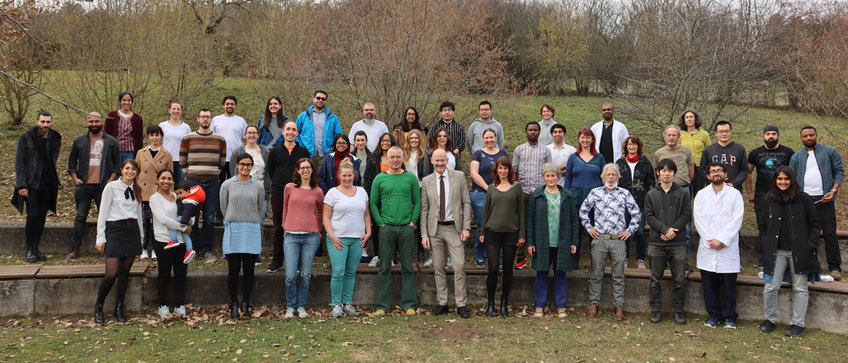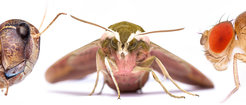
Department of Evolutionary Neuroethology
Director: Bill S. Hansson
The Department of Evolutionary Neuroethology studies odor-directed behavior and the underlying neurobiological substrate in insects from a functional and evolutionary perspective. Studies are performed in two main systems: drosophilid flies and sphingid moths. The main objective is to understand the evolution of olfactory functions. By studying related insects and other animals (e.g. crabs) living under different ecological conditions it is possible to understand how habitat and food-choice affect the sense of smell. The department has a variety of technical facilities (wind tunnels, flywalk system) for the quantification of behavioral patterns.

We study odor-directed behavior and its underlying neurobiological substrate in arthropods from a functional and evolutionary perspective. In drosophilid flies our main objective is to understand the evolution of olfactory functions in an ecological context. By studying closely related species living under different ecological conditions it is possible to understand how habitat and food-choice have affected the evolution of the sense of smell. We are also investigating the direct function of the Drosophila melanogaster olfactory system by looking at transduction mechanisms, and coding and connectivity at different neural levels, as well as the behavioral outcome of olfactory processing. In sphingid moths we want to understand how different host plant associations have affected olfactory function and behavior. Both oviposition site search and nectar feeding are heavily dependent on odor information. In locusts we study their unusual olfactory architecture and its resulting odor-dependent behavior. In our Max Planck Center next Generation Insect Chemical Ecology (www.ngice.mpg.de) we collaborate with Swedish colleagues to understand the effects of human activities on insect chemical communication. We make use of modern neurobiological techniques as optical imaging, patch clamping, extra- and intracellular recording, and two photon confocal microscopy. We also use molecular techniques and bioinformatics. Behavioral responses are studied in the field, in wind tunnels and in laboratory bioassays.
